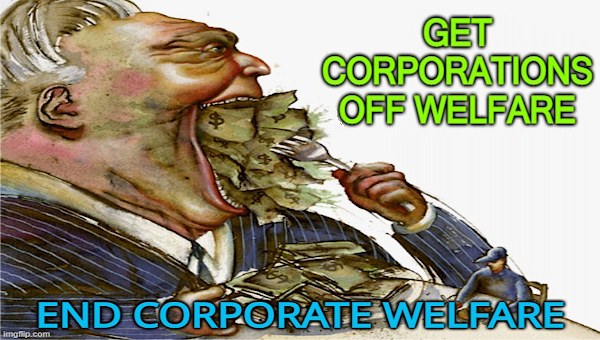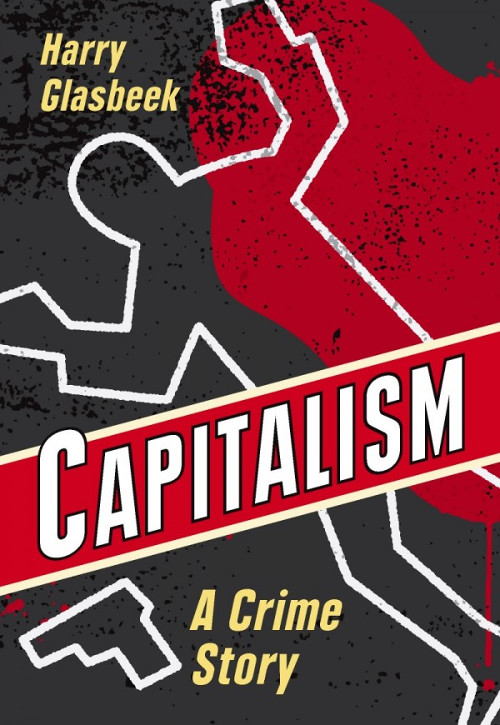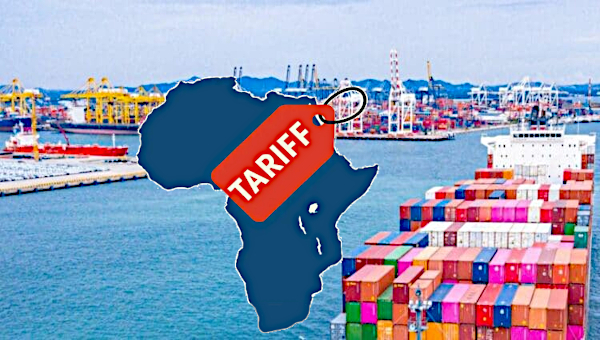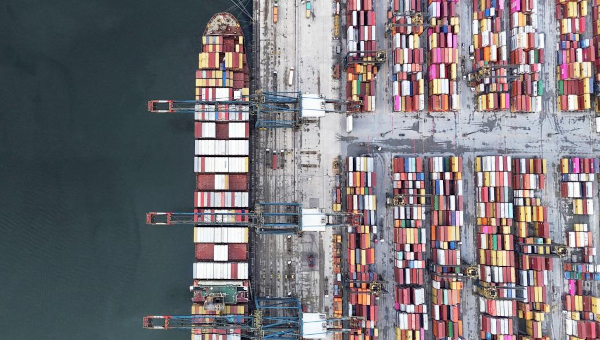Recent Subsidies: The Deification of Capitalism and the assault on all that Matters
On 6 July, 2023, Canadians watching the news were regaled with pictures of beaming federal and provincial politicians, flanked by some rich people who looked sober and content. The viewers were advised that the governments had just agreed to give the last tranche of gadzillions of those viewers’ monies away and told them they should be happy about this. Just under $30-billion of their money (no one said that this was the final bill, of course) was to go to two corporate groups, Volkswagen and Stellantis (merger of Fiat and Chrysler). While these corporations had nothing, nothing to do with Canada, they had been cajoled (with only $13 something and $16 something billion respectively) into committing themselves to the well-being of Canadians.
Our governments felt really smart for having talked foreign businesses into agreeing to this kind of deal. Politicians looked positively smug as they delivered the result of their clever negotiations. On their side, and I am only speculating here, the business representatives may have been finding it hard to hide their mirth as they earnestly expressed their forever devotion to Canadians’ well-being.

Behaving Like Bullies
It is not a crime when bullies coerce other people if those bullies are capitalists behaving as capitalists are meant to do.
When it was over, the politicians and corporate flaks were clasping hands. It was a very public kind of love-in. Things had not always been that amicable. To the contrary. The near $14-billion deal with the mega corporation Volkswagen undoubtedly had required a lot of number crunching and negotiations. The negotiations were, of course, conducted in secret, and we cannot know how friendly or heated they were. The news of the Volkswagen deal spurred Stellantis into action. We know a little more about the atmosphere that permeated the bargaining sessions between it and the governments of Ontario and Canada.
Stellantis had already been granted a subsidy of $1-billion. This amount sounds like chicken feed in the context of a rival getting 14 times as much. But to us mere mortals and to those whose welfare benefits will come under attack when the governments pay for their promises, one billion dollars is quite a large number of dollars. If we were asked to count up to one billion, one looney at a time, it would take over 20 years of non-stop counting. This did not diminish Stellantis’ chutzpah. Channeling Oliver Twist, it begged, “Please Sir, I want some more.” When the government’s initial response was not positive, giant Stellantis behaved way more forcefully than little Oliver. It stopped begging. Indeed, it just stopped. It drove its demand home by halting construction on the plant it had agreed to build when it was proffered the paltry $1-billion, even though at that time, it had thought it had won a fine enough deal to put shovels in the ground. Indeed, Stellantis and the government both trumpeted the munificence of it all. No longer. Now Stellantis threatened, menaced, bullied.
Superficially, its action looked very much like that of a union that, while trying to persuade an employer of its earnest intent to get a better deal, threatens to breach its contract during a period when strike action is not permitted. The law calls this kind of union action ‘intimidation’, that is, unlawful conduct that the law treats as equivalent to an act of violence. It can be enjoined by a court. Refusal to abide by such an injunction will expose the union and its members to a contempt-of-court finding. Moreover, it allows the potential victims of the threatened breach to bring an action to recover any losses they suffer. The law says this kind of bullying is not to be tolerated.
While Stellantis’s strategy to get more was forged with the same intent and the same spirit as a union trying to do better for its members, it could claim that it was not identical, at least not in formal terms. Its threat could be said to be justified because it was a tool to enforce a clause of the contract, not a threat to breach it. This is the kind of distinction that makes sense to lawyers but to few others. Socially and politically, Stellantis’s conduct amounted to bullying, but it was the kind of bullying that law allows. This assertion is supported by considering the way in which Stellantis’ conduct would have been treated if it had been prosecuted pursuant to section 346 of the Criminal Code. It provides that people will have committed the offence of extortion if they use threats, violence, any form of coercion, or any other means to obtain something from other persons. As described, the section could apply in many contexts, including business relations. It might include circumstances in which one party to a contract threatens to terminate the contract with a supplier because the other party is not meeting its promises. Logically plausible as it might be to apply s. 346 of the Code to such circumstances, conventional legal opinion is that this kind of threat by a disappointed contractor should not be prosecuted because such action would interfere with ordinary, everyday for-profit activities. The argument is that, while formally the conduct is seemingly criminal, functionally it should not be so treated.
When formal distinctions work for capitalists, they are embraced. When formal similarities work against capitalists, they are set aside. Capitalism and capitalist law are flexibly self-serving! The gatekeeping lawyers argue that when something that looks like criminal extortion takes place between consenting adults practicing capitalism, the disputing parties should use the civil law to settle their commercial differences. This kind of extortion is a private matter, to be settled privately. It is not an issue in which the public has an interest. It is not the kind of bullying about which we should care.
Compare this with the way we view equivalent conduct by workers. If a union and its members lawfully withdraw their labour in concert, that is, strike, during a permitted period to achieve permitted goals and a government contends that their formally permitted use of coercion is harming the public too much, their right to strike will be taken away. As I was writing this, the federal government threatened the lawfully striking dock workers in British Columbia with back-to-work legislation and/or the imposition of terms and conditions by a third person. The same government, at the same time, is seemingly finding it impossible to say that – having introduced legislation to allow them to do so – Meta and Google must pay media and journalists for republished news and opinions or be punished. Rather, the government of the day is trying to negotiate with these private profiteers, settling the matter as if it were a private dispute.
Bullying is in the DNA of capitalists; it inheres in all ordinary acts of capitalism. Thus, while Stellantis was seeking to hide behind a claim to be merely enforcing a contract, it does not really believe it has to justify itself legally. Currently, it is threatening to shut down its operations in the UK unless the government can find some way to compensate it for potential losses that may arise from the Brexit decision. In March of this year, it closed down a Jeep manufacturing plant in Belvidere, Ill., furloughing 1350 long-time employees. Stellantis blamed the increased costs related to the electrification of the auto industry. The mayor of Belvidere has called on the federal government to help Stellantis out.
To be sure, there may be a way to argue that when large corporations threaten governments in order to extract money from them, they are not engaged in anything like extortion. For it to be extortion there must be targets who are intended to be victims and who see themselves as victims of a threat or of economic power used coercively. There is a good deal of evidence that contemporary governments see themselves as partners rather than victims of these large capitalist firms who make their demands so forcefully. This line of argument brings some troubling questions to the fore.
Are Governments Addicted to Making the Rich Richer?
While the grants of monies to Volkswagen and Stellantis are two of the more spectacular instances of government largesse, they are not the first mega firms to be recipients of hand-outs. David Lewis hit a very receptive chord with his label “Corporate welfare bums” (taken from his 1972 book, Louder Voices: The Corporate Welfare Bums). He argued that “government and big business are holding hands – in your pocket.” He listed the following not-impoverished mega firms as beneficiaries of hand-outs: ALCO, Westinghouse, Michelin, Shell, Denison Mines, Cominco, Dofasco, Falconbridge, Bell Canada, General Electric Canada, and, of course, the perennial corporate welfare bum, General Motors, that later in 2009 was given just over $10-billion help it deal with the meltdown caused by greedy financiers and banks and, after paying some of it back to us, left the government with a net loss of $2.8-billion; more recently, there was the shutdown at Oshawa and its partial re-opening with the aid of another hefty subsidy. Today, we would add Bombardier, SNC-Lavalin, CN Rail, and General Motors again – which has just been handed $300-million to help it set up an EV battery component plant in Quebec, with the Quebec and federal governments each agreeing to contribute 25% of the costs of setting up the plant, which promises to create 200 jobs. Meanwhile, Quebec and the federal governments are reported to be close to finalizing another deal to help Northvolt, a Swedish mega firm, build a $7-billion plant near Montreal (cost to Quebecois is still secret, of course), and a manufacturer of antibodies has scored a hand-out of $401-million from the federal government, plus $75-million from British Columbia, to boost its operations; and so it goes.
There is no discernible pattern to suggest that something like a coherent industrial policy is being pursued, and it does not seem to matter too much which political party is in power. And it is also clear that should monies be handed out and the recipient subsequently quit the jurisdiction, close in part, or be taken over by another profiteer, governments rarely recoup their ‘investments’; there is no evidence that, governments, as they throw money into corporate bins, try to establish some ownership with rights over the beneficiaries’ operations. Money down an open pit, hoping for the best, is the modus operandi of our elected governments.
Hill and Mitchell (21 May, 2023) report that between 2007-2019 (the last pre-covid year of available data), the combined total of subsidies, inflation-adjusted, came to a whopping $352.1-billion. Giving in to the rich and powerful who demand that they be given help is either an inexplicable addiction or it indicates that our contemporary governments understand that their functionaries’ well-being – that of the politicians, the senior bureaucrats, and the immediate cadre of lawyers, accountants, and advisors who swarm around them, as well as the government’s hold on office, are dependent on keeping the owners of the means of production happy. Governments are more like beggars than governors. Often, this makes them look pathetic.
When Stellanis declared its willingness to pull out, the federal government tried to re-assure Canadians that it was doing its best to bring Stellantis to heel by throwing it a bone. But, for a while, they could not find anyone at Stellantis to whom they could make an offer. Mr. Champagne, Canada’s Industry Minister, told reporters that while in Seoul for a G7 meeting he would be attending a dinner at which the CEO of LG Energy Solutions was also to be present. LG, a giant and profitable Korean firm, is a senior partner in the Stellantis group of companies. While he, the Industry Minister for Canada, had not been able to set up a formal meeting with LG’s CEO, he told journalists that he knew what the CEO looked like and would buttonhole him. A sorry anecdote: the nexus between capitalists and elected officials is revealed as a power relationship between the superior and the inferior, reducing supposedly all-powerful elected governments to sucking up to capitalists in the hope that the privateers will be kind to them.
The Hollowness of Attempted Justifications
Our governments have internalized the idea that governments are incapable of satisfying the public’s needs and desires. They accept the teachings of right-wing economists that allege governments have no way of knowing what people need or want and what price they would be willing to pay for goods and services. The difficult tasks of how talents and resources should be deployed must be outsourced to an independent institution: the market. The famed Adam Smith invisible-hand formula pervades conventional thinking: if all of us, acting in our self-interest, in a competitive setting, use our talents and resources to meet the demands spontaneously generated by others, all of us (eventually) would get everything we have decided we need and want at the lowest possible cost. An advantage this brings is that government becomes a mere facilitator; it does not direct.
There have always been many on-the-ground problems with this formula. Talents and resources, especially resources, have always been, and stubbornly remain , unequally divided, making it very awkward to operate a scheme that depends on a truly competitive setting. It is empirically clear that the market has never rectified this grave difficulty for the model. Of course, governments have the power to do so. But mostly they have done, and continue to do, the contrary.
In a colonized country, such as Canada, much of the original accumulated private property was stolen from the original inhabitants. No one (unless indigenous) is saying it should be given back. Inasmuch as some reparations are made, they are paid for by governments. Much of that originally stolen property became the backbone of unearned wealth and a platform to accumulate ever more wealth. Canada has no inheritance tax; it has no wealth tax; Revenue Canada’s resources to recoup some hidden profits and wealth are limited and are always being further reduced. In any event, Revenue Canada is not all that eager to exercise its powers to go after those suspected of not paying their share. It is, after all, very difficult, made so in part by governments allowing the rich and mighty to protect themselves from being held responsible for anything. They are allowed to create corporations that the law benignly treats as distinct individuals who will be held responsible, rather than the people who benefit from their corporations’ profit-oriented pursuits. It is hard to identify those who hide behind these legally created walls; it is even harder to hold them personally responsible. Corporations can divide up assets and wealth, spread it around, and then hide it from governments rather easily. In addition, the use of corporate vehicles allows easier ways to concentrate large gobs of separate capitals, reducing the potential to have those competitive markets so idolized by Adam Smith and his followers. As well, our governments pretend that it may be more efficient to have a few large corporations dominate segments of the market – to compete internationally, to reap the efficiency benefits that size bestows, and the like. As a result, there are very few competitive markets.
In Canada, four supermarkets control 72% of retail; two bread manufacturers control 80% of that market; three office supplies’ firms share 78.2% of that market;one1 movie theatre chain has 74.2% of that business; four firms have 74.1 % of the markets supplying eye glasses and contact lenses; Costco and Walmart constitute 91% of superstores and warehouses; Rogers, Bell, and Tanenbaum’s Kilmer Sports control the four major sport enterprises in Toronto, and then there are the banks; Air Canada…etc.
Is it surprising that some believe that a chunk of the inflation rate may be due to profiteering by non-competing ‘entrepreneurs’?
So: we have an ideological framework that allows governments to leave all major decisions to the invisible hand of the market, not to bring fraught political views into the ‘natural’ working of a market capitalist economy. Governments are to make sure markets are fair and provide equality of opportunity to participate to one and all. They may use their powers to ensure the proper working of the market. For the rest, they should leave the creation of wealth to self-serving private actors. To use modern language, governments are there to steer, not to row. There is to be no industrial policy, no acquisition of economic interest in private firms; there is to be no effort to control the commanding heights of the economy.
The problems with these starting points are that markets never work as Adam Smith envisaged they should and that governments do feel they need to respond to political pressures, which require intervention with markets. Often, their subsidies to some private actors are justified by (i), saying that they still rely on private profit-seekers for welfare creation and (ii), are incentivizing (is that really a word?) them to provide work-for-wages opportunities that unsubsidized marketeers would not offer. In such instances, governments are declaring their continued belief that private profit-driven growth is to be encouraged; they are merely making it easier for profiteers to invest in a particular area or segment of the market. After all, they do not have to invest any of their wealth. They do us a favour when they do, and we should be gratified if they do.
Currently, environmental politics drive governments to enter into the fray. They feel themselves pushed to restructure the markets that for eons rewarded private actors for not taking notice of environmental concerns. It is a form of intervention that continues to favour growth, albeit in novel ways. The lead in reducing environmental harms is still to be taken by private firms trying to accumulate more private wealth. The environment is to be saved while maintaining the system that privileges the private sphere over the public one.
Daniel Tanuro in his article “COP26 Gives it up to the Capitalists,” analysing the influential IPPC Special Report, 2019, concluded that the IPPC’s proposed solutions assumed that market models could do it. Tanuro’s summation of the Report was the following:
“Let’s not Decide Anything, let’s Create the Market that will Decide.”
The result is bad policy-making that mainly benefits the owners of the means of production. So it is with the electric vehicle policies and, therefore, the subsidies given by Canada and provinces to electric vehicle battery manufacturers.
Changing Things to Retain the Status Quo
The cat is out of the bag. Everyone, well, practically everyone, agrees that the emissions from fossil fuels are dangerous and need to be reduced and eventually eliminated. Thus, the lithium battery-driven vehicle is seen as manna from heaven. It is a technological solution that reduces emissions and permits private automobile manufacturers to continue to profit from manufacturing automobiles and at the same time, provide employment. It is a trifecta, a win-win-win solution. Governments and auto-makers embrace it and (understandably, but sadly) so do some unions.
Underneath all the enthusiasm, there may well be some nagging doubts. After all, if it is clear that consumers want such an environmentally friendly vehicle, why is the demand not very high? While the electric car has been promoted for some time (anyone remember the 2006 film Who Killed the Electric Car?, which argued that the automobile and fossil fuel companies did the killing), it was not until the end of 2022 that the sale of EV’s topped 10% of global vehicle sales. And if there is a growing demand, why would automobile manufacturers not compete to supply it? Isn’t that the way it is supposed to work? The answer is that the North American cost of re-tooling, tapping the resources, and carrying out the R & D necessary would require the vehicles to be priced too high for the North American consumers. In short, a rising demand would be hard to satisfy by the existing manufacturers and vendors. They do not invest unless they can see a profit on the horizon, and they do not have to do so. If we want large existing corporations to help us with a chosen environmental policy, we need to help them out, to inveigle them.
The solution: subsidize potential purchasers and suppliers of a new product. To ensure it will be saleable, the manufacturers will take its competitor, the fossil-fuel-driven vehicle off the roads by a specific date. But only if they can be assured that the cost of ending the life of one product and the delivery of a new one is met by the taxpayer.
To pursue environmental policies, governments set out to steer in a new direction by helping the rowers who created the mess to clear it up. Is there something troubling about this picture?
Here, consider the choice of Volkswagen to make batteries for electric vehicles in Canada. It is, after all, a corporation that took the lead in recent felonious conduct intended to damage the environment so that it could make more profits. In 2015, it pled guilty to installing a so-called ‘defeat device’ that reduced emissions when the cars were being tested and allowed them to pollute when in normal use. Why would any government choose this corporation as a tool to combat environmental damage? Or, indeed, any of the other well-known automobile corporations, such as Ford, which deployed a similar device in 1972, Chrysler, which was found to have hidden such devices in the radiators of its vehicles, and so on and so on?
It may well be true that governments’ reliance on major profit-seeking firms cannot afford to be choosy. My own work documents that there are no major corporations that have not behaved in egregious and/or illegal ways. This is why government hand-outs need to be given without regard for prior bad social behaviour; history is to be ignored. To make the point stick: Volkswagen and the Porsche family, who still control the brands completely, became wealthy in part by employing slave labour furnished by the loathsome German Nazi regime. A visitor from Mars would find it hard to understand how a business with a shocking record on the environment and a profound association with some of the worst criminals in history would be the beneficiary of any enlightened government’s largesse.
Thus, a choice is made to have the private sector do something that elected governments think it is essential to do. But this raises another question: why does Canada have to make batteries for electric vehicles itself? After all, the mammoth subsidies given to Volkswagen and Stellantis to do it here were posited on the basis that they would otherwise do the same thing in the US where they would have been able to get a very similar deal. Indeed, Stellantis’ argument, “Sir, I want some more,” was posited on the fact that it could get more from the Biden Administration, which has promised a staggering $US 2700 to $US 4500 for each battery produced by any corporation in the US. The cost of attracting any of those corporations to Canada was always going to be astronomical. However, if batteries were going to be produced in the US and are being produced in other nation states, notably China, why should Canada be a competing producer? One answer, of course, is that we would be better integrated in the North American automobile industry, something assumed to be a good thing. Another related argument is that it will create many needed jobs.
There are speculations about how many jobs will be spawned, directly and indirectly, by building battery-producing factories. But 2500 to 3000 direct permanent well-paid jobs in each of the new gigafactories (a term favoured by cheerleaders for these subsidized enterprises) are numbers frequently found in press releases. On the spill-over effects, the claims, necessarily, are even less firm. I have seen an assertion that an extra 30,000 jobs may be created, but it does not say they are well-paying or permanent; they may be good jobs or not. They may last; they may not.
Jaime Watt, Toronto Star, 12 June , 2023: “When the numbers are crunched on the dollars-spent-per-jobs created, many will think the deal makes no sense. In fact, many would say: just cut these workers a cheque for their lifetime salary – it would be cheaper!”
Still, it is something. It is, however, hard to guess whether an equivalent number of jobs might not have been created with the same amount of money. After all, spending the money on one thing makes it unavailable for other ones.
The Biden Administration had promised a Building Better Act to set the US on the way to recovery and to a cleaner environment. By the time the bargaining with Congress and major corporate lobbies was over, the originally promised money, $2.7-trillion, had been reduced to $548-billion, a $1.7-trillion reduction. Most of what is left, some $369-billion, is to go to climate-improvement infrastructure, including the generous subsidies for lithium battery production, which is what pushed our Canadian governments to give handsome sums to Volkswagen and Stellantis. Most of that $1.7-trillion taken out of the original proposed recovery plan was destined to be allocated to child and universal pre-K, paid family/medical leave, child tax credit, affordable housing, immigration reform, education, medicare hearing coverage, etc.
The message is clear: this kind of environmental policy is good for owners of the means of production and for some workers. It is to be paid for by reductions in the social wage. The job creation aspect loses some of its gloss in this context. Worse, it is bad environmental policy.
Most importantly, and recognized by many commentators, it assumes that automobiles are to remain central to our transport system. This means the continued extraction and processing of the materials needed to build cars, such as steel and some plastics, rubber, etc. It means that to produce, say, nickel in Indonesia, 20 tonnes of carbon dioxide per tonne of nickel will be emitted. It means that we envisage the maintenance and building of roads, encouraging the serious emissions associated with concrete. It means the outright loss of agricultural land, and the poisoning of near-by land. And the manufacture of cars requires water, with Maude Barlow & Tony Clarke’s Blue Gold claiming that to build one car demands 400,000 litres of water, again affecting food production. It means that the chargers needed for the battery-driven cars will be a drain on energy supplied by CO2 emitting plants. Finally, it means a continuation of injuries and fatalities, the waste associated with litigation and insurance, and, of course, advertising.
Even as emissions are reduced by the increased use of electric vehicles, overall, harmful emissions may not decrease. Moreover, the supposed benefits of emission reductions will not be immediate. It will take time, as many fossil fuel-driven cars will remain on the roads for a long time yet. The environmental benefits hoped to be gained by subsidizing the electric car must be discounted by these accompanying impacts. And then there is the lithium battery.
The current technology requires a very large battery, with the average battery weighing in at about 1000 lbs, some coming in at nearly 2,000 lbs. This means the vehicles need to be sturdier, demanding more steel, more nickel. The battery requires six times more rare earths than do fossil fuel-driven cars. More mining will be spurred, aggravating the already well-known horrendous conditions for impoverished workers in the extraction of cobalt, nickel, and manganese, in places like Ecuador, Indonesia, the Democratic Republic of the Congo, etc. There are estimates that the manufacturing of batteries and the refining of the component parts for them may require about three to four times the energy needed to produce steel and copper. As well, to date, there appears to be no commercially viable way of getting rid of the batteries and their component parts when they die. They have a life expectancy of eight to ten years.

It appears that the subsidies, promoted as being a major contribution to the necessary reduction of carbon emissions by giving electric vehicle production a boost, may not be as effective as promised. Here, attention is to be drawn to the fact that lithium must be found to make the batteries. The oil-patch problem arises: the lithium may not be where our manufacturers want it to be and/or be where competitors or political adversaries are in control. Large deposits exist in China, Bolivia, and Australia. Accessible rare earth minerals need to be found. The targets of our subsidies are manufacturers located in North America. They know they are at a disadvantage because China, according to the New York Times (May 16, 2023), has control over the extraction and refining of the minerals used in the production of batteries. China already produces 54% of all electric cars in the world, produced at half the cost of our own manufacturers’. If the environment was the only thing at issue, we would form partnerships with China, as the New York Times argues. But our politics and the need to keep our own rich people rich prevents this. Instead, two responses are on the table.
First, there is a scramble to find our own sources of lithium and rare earth minerals. More explorations and exploitations of potential lands (Ring of Fire, for instance) are on the agenda. More gashes are to be inflicted on the earth; more indigenous lands are to be subjugated to the insatiable quest for profitable growth. There are plans to mine the sea-bed for these needed resources, needed that is, for a technological solution to an environmental problem that is unlikely to work. Nature and indigenous people may have to be sacrificed to enable the production of the electric vehicle to do its hoped-for magic. It is a little surreal. Second, innovators are hard at work to find a new kind of environmentally-friendly vehicle that does not require the problematic lithium battery. Solid-state batteries are being developed. They will weigh only one-third of the lithium battery, and they will charge more quickly. It is believed that this technological fix is still some years away. Green hydrogen is another solution, one already used in heavy trucks. Again, the weight is less of a problem, about half that of a lithium battery, and the ‘charging’ will take no longer than it does to fill a petrol tank. Synthetic fuel is yet another possibility. Those racing cars that blight cities once a year use it. And, irony of ironies, a Porsche company (the owners of Volkswagen) is producing synthetic fuel, using wind power and water and carbon dioxide at an experimental plant in Chile. None of these alternatives, in terms of mass manufacturing, are realistic yet. But they do point to the fact that, not so far in the future, after millions of electric vehicles with all their environmental problems have taken over our world, they may become obsolete.
In short, the two justifications for subsidizing Volkswagen and Stellantis – using a marvelous technological tool to save the environment and to create jobs – are fraught. Imagine, if the subsidies had been used to create a fast rail system and/or better public transport in clogged-up and polluted cities, pockmarked by expensive and environmentally damaging parking spaces: would that not have led to job creation? Would that not have reduced reliance on automobiles? Would that not have saved on emissions? It would not have resolved the existential ecological problems we have to confront, but it would have shown an earnest desire to do so.
Electric vehicles suggest that Canada does care about the environment. But this show of interest comes after the much-derided purchase of a pipeline by Ottawa that is now predicted to cost Canadians $30-billion (How easily that expression ‘billion’ trips off the tongue!). There have been many other fossil fuel subsidies, leading Alex Ballingal, Toronto Star, 30 March, 2022, to report that Canada has failed “to fulfill every pledge to slash emissions it has ever made.”
And then there is this, as reported by Pierre Dubuc: Ottawa and Quebec subsidized the establishment of a cathode manufacturing plant in Becancour. The announcement featured Prime Minister Legault posing in front of a Hummer, the mammoth vehicle for which the cathodes were to be manufactured.
Summation
The subsidies for the manufacturing of the electric battery show us that, as a country, we have no commitment to halting and repairing the enormous damage we have done to our physical environment. Instead, we are devoted to capitalism. As Joseph Schumpeter wrote, “Capitalism without growth is a contradiction in terms.” The quest for more, and then even more, is the driver of capitalist relations of production. The system does not care about the earth, about quality of life, about needs; it cares about satisfying the never-to-be-satisfied hunger for the private accumulation of more and more private property. The increasing number of trillionaires is a testament to the primacy and success of this disgusting goal. Nature and people are there to be exploited. As long as this kind of growth model is facilitated and encouraged, technological fixes to address environmental disasters will fail.
This piece about the subsidies for the manufacturers of electric batteries illustrates this assertion. Mega firms are set to profit, allegedly to remedy environmental harms to which their past profit-seeking conduct contributed so greatly. If there ever are any other beneficial outcomes, they will be incidental. Despite their many declarations to the contrary, this so-called environmental policy’s primary purpose is to serve large capital. The elected governments’ complicity is a measure, both of the existential threat the capital strike entails and of the ideology that it spawns and, in turn, supports, capitalist relations of production.
The US journalist and public intellectual Lewis Lapham described the ensuing reigning system of government (paraphrase):
There now are two governments… the permanent and the provisional. The permanent… is constituted by the corporations on the Fortune 500… the permanent government is obedient to the rule of men, not laws, as it controls production and the way in which people are to live… the provisional government is… subject to a rule of law and not of men…it must live within the cage of high-minded principle while controlling very little of real substance.
A well-known slogan of the global climate change movement catches the essence of what must be done:





